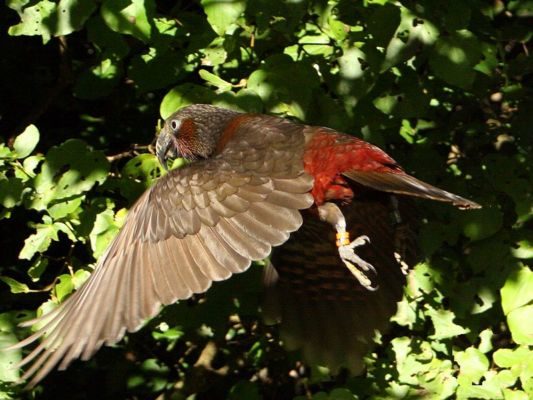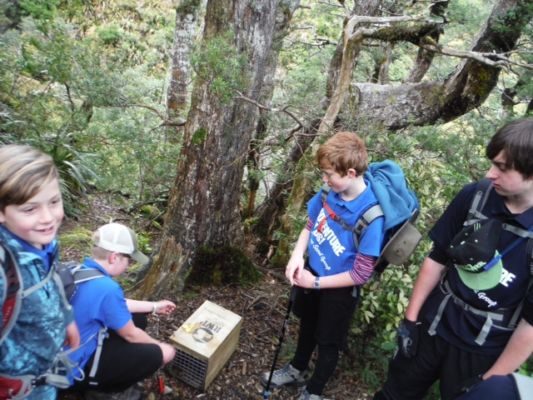In a paper just published online (and not available in print until 2017), some of New Zealand’s top conservation scientists review the prospects for control and eventual eradication of our key mammalian pests. John Parkes, Graham Nugent, David Forsyth, Andrea Byrom, Roger Pech, Bruce Warburton and David Choquenot have written a comprehensive paper looking at the issues facing our native wildlife, the practicalities of predator eradication, the tools currently available to us and an assessment of what our future path may be.
The paper, published by the NZ Journal of Ecology, includes a discussion of the role of the Predator Free NZ movement in that future – and the authors have some reservations regarding that role. The authors also discuss the need for government agencies to work more closely and cooperatively on predator control. It is a paper we highly recommend be read in full. It has some very strong and valid points to make and raises some interesting points for debate.
Some key points include:
• The need for coordinated, optimised, prioritised deployment of pest control resources: “The current deployment is the sum of largely independent decisions made by different agencies and individuals with different priorities. National agencies might optimise their own decisions, but overall deployment will always be nationally suboptimal when objectives are set at regional or local scales.”
• The need for better control tools before a predator-free future can be achieved: “A key need for the predator-free model is a tool that kills 100% of each of the three main target species [possums, rats, stoats,] ideally with one large-scale, socially-acceptable application. Without this tool the cost to find and kill survivors would raise the costs of national eradication to about $32 billion, assuming current costs of multiple-species eradications on islands.”
• The need for better ways to detect survivors at very low densities: “The ability to detect target pests at low densities and management of reinvasion are essential for achieving zero or low pest density goals.”
• They outline the reasons for their reservations about the Predator Free NZ movement and their fear that attempting to be completely predator-free risks diverting resources from high priority areas: “The national scale pest- or predator-free aspiration is not currently (and may never be) feasible and risks diverting resources from more optimal solutions, as occurred with the ‘last rabbit’ and ‘last deer’ programmes promoted last century.”

• Instead, a halo model is favoured by the authors: “We suggest that the core/halo model of pest management, within a network of assets to be protected, will best protect New Zealand’s biodiversity for the foreseeable future… We discuss how this deployment might evolve as a network of smaller core areas aiming to achieve zero or low densities of all or most pests, with surrounding halos with lesser control effort against fewer species, enough to allow for at least ‘safe passage’ of native animals between the cores. This system might work best along the more-or-less contiguous native habitats along the axial ranges of the North and South Islands, especially if agencies with a national mandate are prepared to act in the extensive areas between core sites.”
The review also discusses the importance of people and the need for consultation and good communication with the public if large-scale predator eradication is to be successful.
“Most eradication projects have been on land with few, if any, inhabitants and therefore obtaining the social licence to operate has been relatively easy. To step up to large areas that include many private tenures and a wider range of people (and therefore views) will entail large and complex public engagement. Even if new technologies, e.g. based on GMOs, are developed, the social licence to use them will be the most important constraint to overcome and early engagement with stakeholders and the wider communities will be critical.”
And later in the paper:
“People value assets differently and in particular tend to value their local biodiversity assets more than those elsewhere, and the various major pest programmes have fundamentally different goals, e.g. protection of livestock from TB versus protection of indigenous biodiversity. The current ‘system’ reflects these preferences. A key question is how future additions (and deletions) to the areas and/or pest species to be managed might be used to enhance the national conservation interest. This is not a simple question to answer even within one agency.”

Towards the end of the paper, the issue of ‘social licence to operate’ is discussed further: “The role of citizens in helping or hindering a predator-free vision remains unclear. There is growing awareness that people can play a part in removal of pests from urban and peri-urban areas and they welcome the increase in native biodiversity that results from such activity. The growth of pest control initiatives by community groups and NGOs indicates that there is no shortage of enthusiasm for the type of pest-free vision represented by Predator-Free New Zealand. However, consent to eradicate is not decided by the majority of citizens, rather it is proscribed if any stakeholder has the power to say no, if only on their land. Inevitably, there will be such naysayers with objections to the use of toxins, some animal-rights groups, hunters worried about poisoning deer, or general antipathy toward intervention by government or environmentalists.”
Altogether, an interesting read. The full article is published in the NZ Journal of Ecology and is freely available online.

